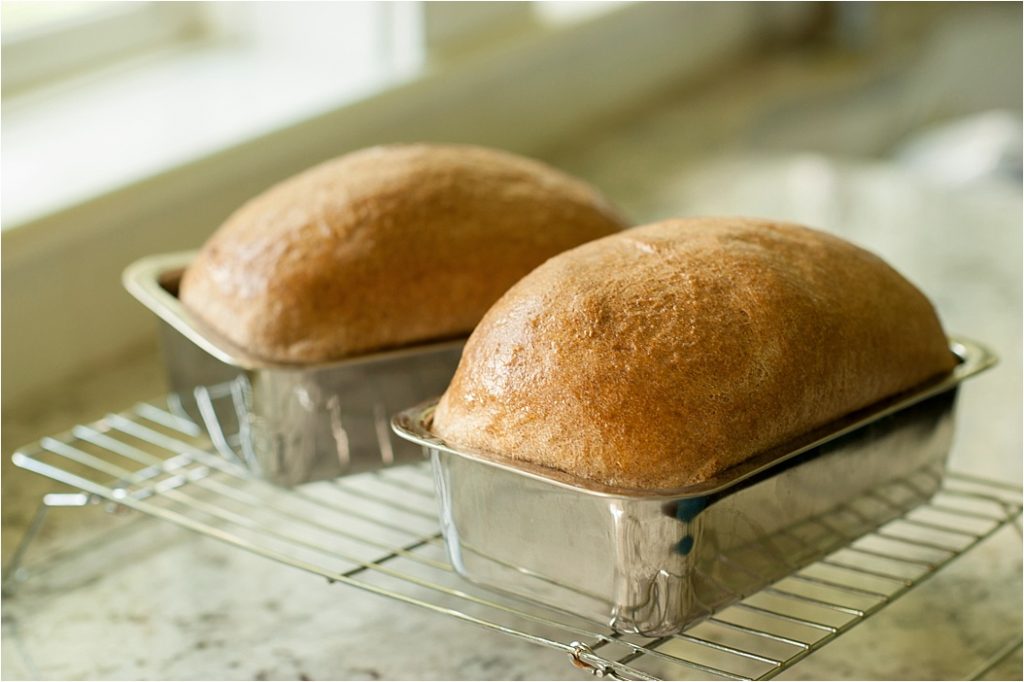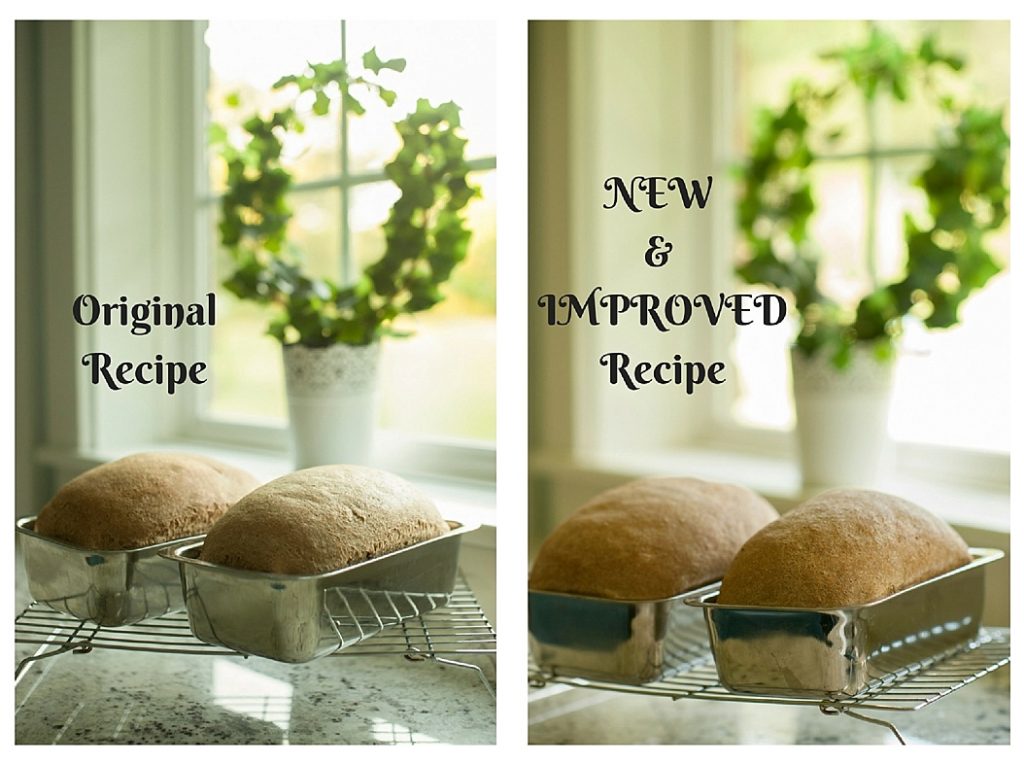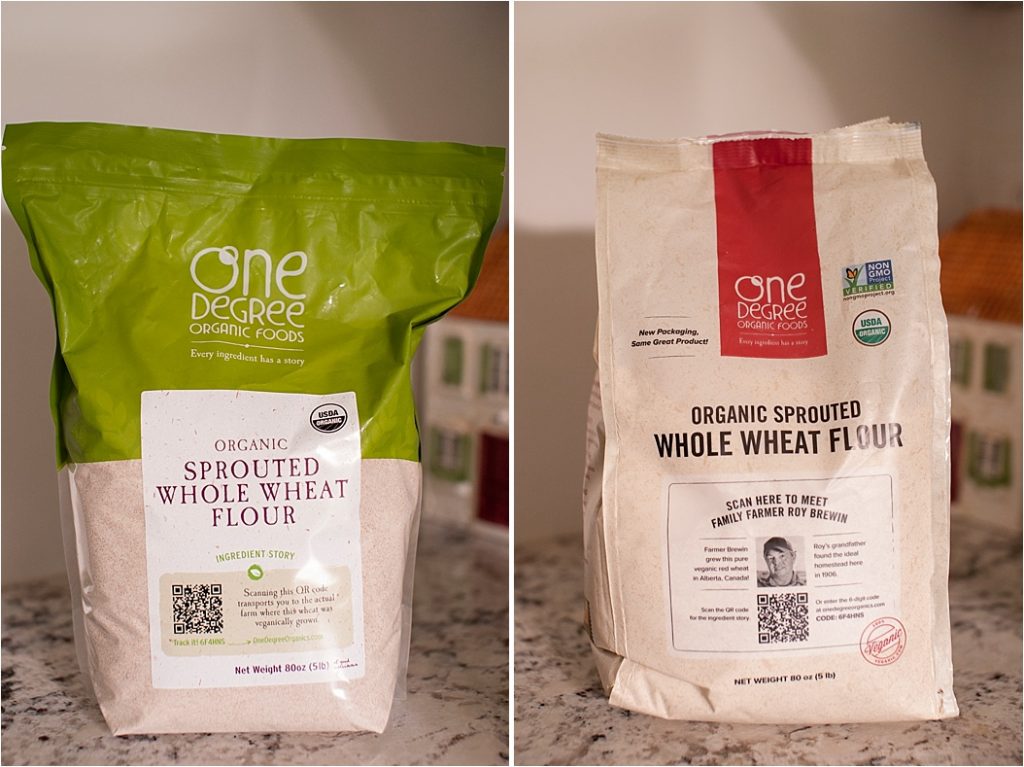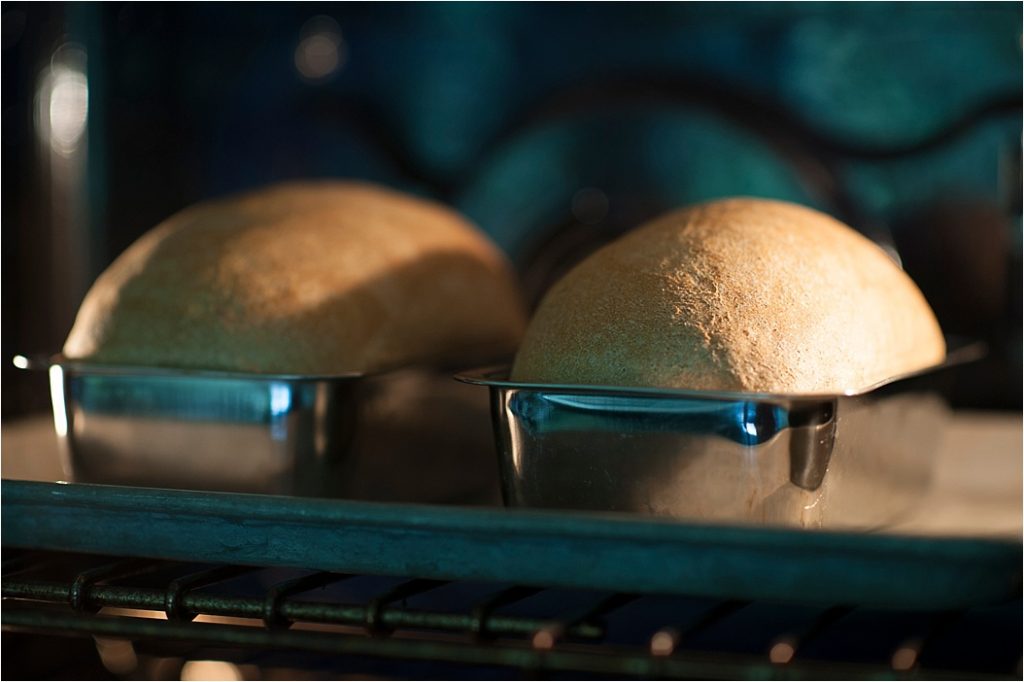 Sharing exciting news of BIGGER, BETTER, SOFTER, FLUFFIER and HIGHER sprouted grain bread than I have ever made before!!! Read below to find out all about my whole-grain bread discoveries and my NEW and IMPROVED “Easy Whole Grain and Honey Sprouted Bread” recipe!
Sharing exciting news of BIGGER, BETTER, SOFTER, FLUFFIER and HIGHER sprouted grain bread than I have ever made before!!! Read below to find out all about my whole-grain bread discoveries and my NEW and IMPROVED “Easy Whole Grain and Honey Sprouted Bread” recipe!
Bread is the reason I began blogging. I don’t call myself a “Whole Grain Jane” for nothin’. THIS post of my “Easy Whole Grain and Honey Sprouted Bread” was my first post I ever wrote. About three years ago, I tweaked my regular bread recipe that I had used for years and years and made it into a THM recipe so that those of us who wanted soft and fluffy homemade sprouted bread could do so while staying within the Trim Healthy Mama plan. While developing my sprouted bread recipe, I learned that sprouted grains are great for not just Trim Healthy Mamas, but they are great for everyone because once a grain is sprouted it acts more like a vegetable in our bodies and thus doesn’t spike our blood sugar like traditional un-sprouted breads. You can read all about it here on my post.
Maybe you are wondering why I needed a “new and improved” version of my bread recipe if the original recipe was so great? You see, I began using One Degree sprouted flour because that is what was available to me 3 years ago. It came in lovely green bags and worked great…until they changed their packaging…I contacted the company and they say it is the same product inside the bags, but alas, my bread and the bread of my reader’s began to have rising issues. I was puzzled as to the cause of why, all of a sudden, I began having issues with my bread rising when it had risen well for so long previous to that. It was SUPER frustrating that what had once worked so well, was now failing me and my readers. I decided to take on the challenge and figure out this bread dilemma!
Original Green Packaging & New Red Packaging
I tried making the bread with all sprouted spelt flour, but the spelt had trouble rising well. Then, I tried making the bread with all sprouted whole wheat flour. It produced a better loaf than when I made it with all sprouted spelt, but it still wasn’t rising like I had hoped. Next, I tried many combinations of the two sprouted flours and yet, I wasn’t consistently getting the results of fluffy bread like I once was before the packaging change. After I exhausted my ideas of different sprouted flour combinations I decided maybe I needed to try a different yeast and that didn’t do the trick either. More frustration…
While I was at a convention this summer, there was a booth that sold homemade bread products, so I stopped by there to chat with them to see if they had any ideas I could try. They were not using sprouted flour, so they couldn’t help me on that front, but they did have two ingredients that caught my eye. They carried a special yeast that I grew up using when I made bread (I used to make about 8 loaves of bread a week as a young girl), so I bought that.
I decided to also try another product they carried called vital wheat gluten. The vital wheat gluten is supposed to really help whole grain breads to rise, so I thought I’d give it a shot and see what happened. I had used a product called “dough enhancer” in my bread recipe when I was growing up, but I opted for the vital wheat gluten instead of the dough enhancer because the dough enhancer had some ingredients in it that I was trying to avoid.
Armed with my new ingredients, I came home and was eager to see if they made a difference. Lo and behold, they did make a difference! My bread was better than it had been in a long time, but it still wasn’t where I hoped it would be so I kept tweaking. What I finally came to realize, is that the dough needed more “stability” to rise better and the sprouted flours were more “delicate”, so to speak. I decided to do the “unthinkable” (in THM circles) and add some ingredients that are rarely used in the THM plan. Those ingredients that I added were a tad of regular whole wheat flour and a little unbleached white flour to give the dough the needed stability in order to rise well. My thinking for being OK with adding minimal amounts of these ingredients is that there are some other on plan breads, pastas, pitas, low carb tortillas and other products that also use minimal amounts of these flours and are still considered on plan. Don’t worry, I ran the amounts that I added to my new bread recipe by a THM admin for approval before bringing you this revised recipe. If you are staunchly against eating tiny amounts of these other flours, then, by all means, just use all sprouted flour and your loaf will still turn out, but it won’t be as high and soft and fluffy as it could be if you choose not to add the additional flours.
Notice the difference in the two pictures above.
The height of the bread from the new recipe and the smoothness of the sides really shows the difference in the two recipes.
FINALLY, after months of trouble-shooting to get a non-dense, fluffy, mile-high loaf of bread, I had success…sweet blissful success!!! I was so enamored with the texture and airiness of the new bread that I texted pictures of the new loaves to my friends and family so they could “celebrate victory” with me! I hope that you will try this new recipe out and let me know what you think!
Without further adieu…may I present to you the new and improved best sprouted bread I have ever eaten! Head on over to this post to find the newly revised recipe!
Cheers and happy baking!








I’m so glad to know this! A THM friend sent me the link to your bread post. I mix and do the first rise of my whole wheat bread in the machine and then rise and bake in the pan, as you described. For a long time I have wanted to do sprouted grain but wasn’t up for all the research of products and perfecting the process. I agree, the commercial sprouted breads are way expensive and not that tasty — hardly edible unless toasted. I am excited to try this!!
Is there any way of using your recipe for bread, but make an olive bread using Kalamata olives?